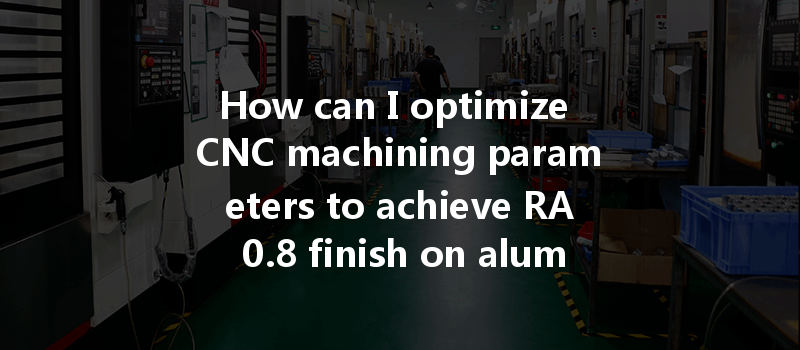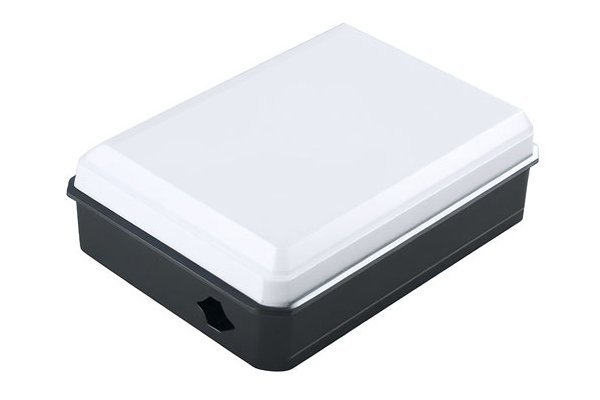Did you know that the surface finish of machined parts can significantly influence their functionality, durability, and even aesthetic appeal? In the world of CNC machining, achieving a specific surface roughness, particularly an RA (roughness average) of 0.8 micrometers, is often crucial for various applications, especially in industries such as aerospace and automotive.
Aluminum parts are favored for their lightweight and corrosion resistance, but getting that perfect finish without compromising dimensional accuracy can be challenging. With the right combination of techniques and parameters, however, achieving this precision is entirely feasible.
In this blog, we will delve deep into the intricacies of optimizing CNC machining parameters specifically for acquiring an RA 0.8 finish on aluminum parts. From understanding surface finish requirements and choosing the right materials and tools to setting optimal speeds and feeds, we’ll cover technical details that can help you enhance your machining processes.
Understanding Surface Finish: Why RA 0.8 Matters
Before we dive into the optimization techniques, it is essential to understand the significance of surface finish in CNC machining. Surface finish impacts various aspects, including:
RA 0.8 is a surface finish that indicates a very fine texture, ideal for numerous applications where low friction and high performance are necessary. Whether you’re producing components for high-speed machinery or precision instruments, achieving this level of finish entails a strategic approach to your CNC machining parameters.
Key Parameters Affecting Surface Finish in CNC Machining
To achieve the desired RA 0.8 finish, various CNC machining parameters must be meticulously optimized. The following sections outline these parameters in detail:
Cutting speed, defined as the speed at which the cutting tool engages with the material, is a fundamental parameter in CNC machining.
Optimal Range: For aluminum, typical cutting speeds vary, but for achieving a fine finish, consider settings between 300 to 500 m/min (meters per minute).
Adjustment Tips:
Feed rate refers to the speed at which the workpiece moves relative to the cutting tool. A slower feed rate usually results in a finer finish.
Optimal Range: For an RA 0.8 finish, a feed rate of around 0.05 to 0.15 mm/rev (millimeters per revolution) might be effective.
Adjustment Tips:
The depth of cut is another critical variable that influences surface finish.
Optimal Setting: For aluminum, aiming for a shallow depth cuts, typically around 0.5 to 1 mm, is advisable for achieving RA 0.
Selecting the right cutting tool can make a significant difference in surface finish quality. Several factors come into play:

Optimal Selection: Look for tools specifically designed for aluminum machining, like those with a positive rake angle and a smooth, polished finish.
The role of coolant cannot be overlooked when aiming for a fine surface finish. Coolants help in reducing heat and friction during the machining process, leading to finer finishes and longer tool life.
Best Practices:
The strategy used for the tool path can also dictate the resultant surface finish.
Tips for Optimization:
Testing and Validation
Achieving an RA 0.8 finish is not merely about selecting parameters; comprehensive testing and validation play a crucial role in verifying that you’re on track for success.
Surface Roughness Testing Methods
Ensuring Accurate Measurements
Regularly calibrate your measuring equipment to ensure that your readings are as accurate as possible. Perform tests on machined parts at different stages to identify adjustments needed in your CNC process.
Troubleshooting: Common Issues and Solutions
Despite the best efforts, you may face challenges in achieving an RA 0.8 finish. Here are some common issues and their potential solutions:
Causes: High feed rates or incorrect tool geometry.
Solutions: Reduce feed rates and ensure the cutting tool has a proper profile designed for aluminum.
Causes: Overheating due to excessive cutting speed or incorrect coolant application.
Solutions: Monitor tool temperatures regularly, adjust cutting speeds, and ensure the correct application of coolant.
Causes: Variability in material properties or tool path inaccuracies.
Solutions: Conduct regular material checks and ensure that your CNC programming is performing optimally and smoothly.
Achieving an RA 0.8 finish on aluminum parts through CNC machining is not just about understanding basic machining parameters; it’s about strategically optimizing each aspect of the process. From choosing the right cutting speed and feed rate to selecting the ideal tool material and maintaining proper coolant application, each decision plays an integral role in the final result.
In this blog, we’ve explored the technical details and best practices to help you refine your machining processes effectively. The balance between efficiency and precision is essential, and with a clear focus on the parameters detailed above, the journey to obtaining that perfect surface finish becomes manageable.
Final Thoughts
Remember, achieving an RA 0.8 finish is not only a testament to your machining capabilities but also critical in ensuring product functionality, longevity, and customer satisfaction. The techniques outlined here can inherently contribute to operational excellence and reduced waste, making them fundamental to any CNC machining endeavor. So, as you embark on your next CNC project, consider revisiting these strategies—success may just be a few optimized parameters away!






